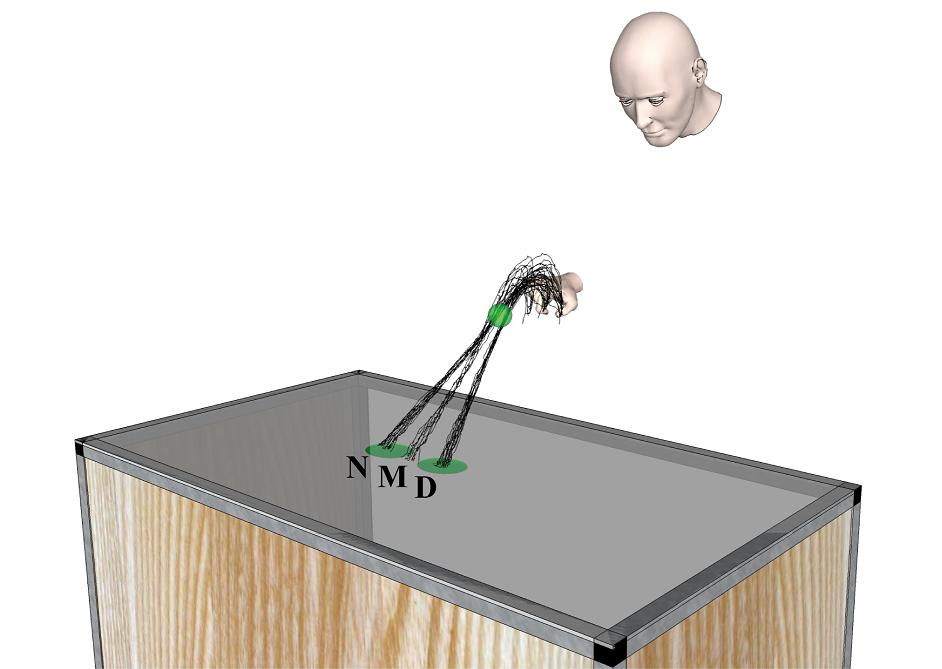
To Touch or not to Touch? Comparing 2D Touch and 3D Mid-Air Interaction on Stereoscopic Tabletop Surfaces Inproceedings
Gerd Bruder, Frank Steinicke, Wolfgang Stürzlinger
Abstract:
Recent developments in touch and display technologies have laid the groundwork to combine touch-sensitive display systems with stereoscopic three-dimensional (3D) display. Although this combination provides a compelling user experience, interaction with objects stereoscopically displayed in front of the screen poses some fundamental challenges: Traditionally, touch-sensitive surfaces capture only direct contacts such that the user has to penetrate the visually perceived object to touch the 2D surface behind the object. Conversely, recent technologies support capturing finger positions in front of the display, enabling users to interact with intangible objects in mid-air 3D space. In this paper we perform a comparison between such 2D touch and 3D mid-air interactions in a Fitts' Law experiment for objects with varying stereoscopical parallax. The results show that the 2D touch technique is more efficient close to the screen, whereas for targets further away from the screen, 3D selection outperforms 2D touch. Based on the results, we present implications for the design and development of future touch-sensitive interfaces for stereoscopic displays.
